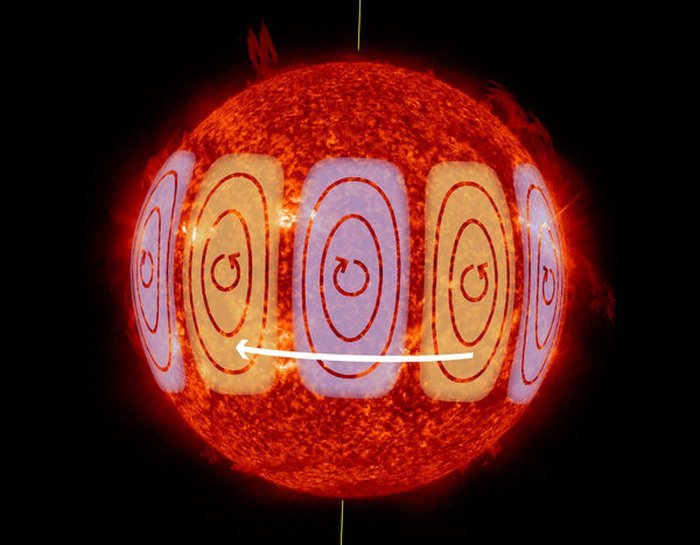At https://phys.org/print444929150.html … the headline is, waves similar to those controlling weather on Earth have been found on the Sun. The research is published in Nature Astronomy this month, May of 2018. They are what is known as Rossby waves which propagate in the direction opposite to rotation, have lifetimes of several months, and maximise amplitude at the Sun's equator. Rossby waves also occur in the oceans and the atmosphere of the Earth. In weather maps of the northern hemisphere Rossby waves are prominent – meanders in the jet stream separating cold polar air regions from the warm subtropical air further to the south. Sometimes they reach the equatorial region. They also affect weather in Australia.
The same story is at https://tallbloke.wordpress.com/2018/05/08/waves-like-those-controlling-… … almost exactly the same (but with comments). See also www.nature.com/articles/s41550-018-0460-x … and see also the Wiki for the coriolis force, at http://en.wikipedia.org/wiki/Coriolis_force … and www.sciencealert.com/rossby-planetary-waves-found-on-the-suns-interior-h…

At https://phys.org/print445010882.html … why does the Sun's corona sizzle at one million degrees F? It seems the Sun's corona is a puzzle to solar scientists. Located 1300 miles from the surface of the Sun the corona is 100 times hotter than the lower layers … much closer to the fusion reactor at the core of the Sun. Of course that may be why they are puzzled. Is there a fusion reactor at the core of the Sun? … or is that another mainstream consensus theory. Basically, it is a sharp rise in plasma temperature between the photosphere (the surface) and the corona. A clue may have been found – the existence of heavy metal ions contained in magnetic flux tubes which convey an electric current. The iron ions are located at the base of coronal loops, arcs of electrified plasma. Observation suggests the corona may contain even more thermal energy than is currently observed in the EUV rays – more than mainstream have accounted for.
